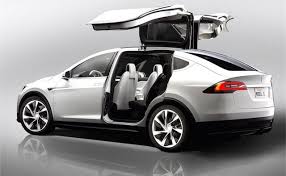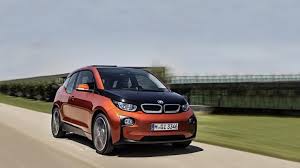3 myths you should know about electric cars in the USA
 On 6 October 2018, the intergovernmental panel on climate change issued a special report to policymakers urging that, in order to avoid the most catastrophic consequences of climate change, we must reduce greenhouse gas emissions by 45% by 2030 and achieve zero emissions by 2075.
On 6 October 2018, the intergovernmental panel on climate change issued a special report to policymakers urging that, in order to avoid the most catastrophic consequences of climate change, we must reduce greenhouse gas emissions by 45% by 2030 and achieve zero emissions by 2075.
Integrated climate change mitigation requires active action in most sectors, particularly transport, which is the leading source of greenhouse gas emissions in the United States and needs reform.
Fortunately, improvements in technology have led to the development of electric vehicles that produce less than 25% of the greenhouse gas emissions from traditional vehicles, according to a report by the California air resources Council.By October 2018, sales of electric vehicles in the United States reached 1 million units. As the economy prepares for the electrification of transport, many energy, automotive and economic experts agree that our future will depend on an electrified transport system, driven by the economic and environmental benefits of these technologies.
However, even with clear advantages, there are consumers who are hesitant to switch to electric vehicles. In the US, there are 3 myths about electric cars that are easy to dispel.
1. Consumers believe that electric cars are more expensive than traditional cars with ice
In 2018, the original price of an electric car was still on average higher than that of a traditional gasoline car. However, the true price of the vehicle includes the cost of ownership and operation. A study conducted by the Electric power research Institute, which examined the costs of operating a fully electric Nissan Leaf car and a Chevrolet Volt plug-in hybrid, found that electric cars are in many cases cheaper to own than conventional ones, thanks to cheaper electricity and lower maintenance costs.
To subsidize the cost of electric cars, governments in large countries and cities where electric cars are distributed offer financial incentives to buyers of electric cars. The us Federal government provides tax breaks of up to $7,500 for buyers who purchase electric cars.
The initial cost of electric vehicles is likely to decrease over time. According to Reuters, major car manufacturers have recently invested at least $300 billion in batteries and electric vehicles. These investments, combined with rapid improvements in battery technology and lower battery prices, will also reduce the cost of electric vehicles.
2. Consumers believe that the charging infrastructure is underdeveloped
Despite the advantages of electric vehicles, many are still hesitant to switch to electric vehicles. Among respondents to a survey conducted in 2018, 63% cited insufficient charging locations as a reason they were not sure or did not want to choose an electric car as their next vehicle.
Most current owners of electric cars charge at home, but not every driver has the opportunity to charge at home, as many rent a house or live in apartments.
California, new Jersey and new York have announced a joint investment of $1.3 billion in additional charging infrastructure as consumers await the emergence of more charging stations. There are already startups with technological solutions that currently allow owners of electric vehicles to access daily charging.
California-based startup EVmatch extends access to reliable options for charging electric vehicles similar to Airbnb and Uber. With the application EVmatch the electric vehicle drivers find and reserve the time and place on the charging stations or points, which are leased to homeowners and businesses that extend the capabilities of public charging without the need for new hardware.
3. Consumers are afraid that the power reserve is not enough to travel long distances
According to the survey, 58% of consumers said they would not own electric cars because they were afraid that their power reserve would not be enough to travel long distances. The average power reserve of an electric car today is 310 km compared to the power reserve of traditional gasoline cars, which is 700 km.
With increased investment and improved battery technology, the problem of limited electric vehicle power reserve will be gradually solved, faster chargers will be available soon.
There are currently three levels of electric vehicle charging speed, and the difference between the three levels is significant. Level 1 can provide a power reserve of up to 8 km, while level 3 — from 290 to 390 km in 1 hour.
While charging speed may be attractive to consumers, it may be more important to have a sufficient electric vehicle power reserve. The Volta network can provide free public charging stations that integrate with everyday activities — charging your electric car is possible during a 30-minute grocery shopping or watching a two-hour movie at a local cinema.
FreeWire Technologies, founded in 2014, produces mobile charging stations for electric vehicles. Their Mobi charger can be booked by office workers using the electric car charging app in the Parking lot near the building.
The growth pressure from the public on addressing climate change of the government, municipal services, groups of protection of interests of private enterprises and startups react to the transition to electrified transport system.
In States such as California, where the Zero Emission Vehicle (ZEV) program operates, car manufacturers are required to offer consumers a certain amount of environmentally friendly vehicles, including electric vehicles. Nine other U.S. States joined California, supporting the ZEV program, which accounts for more than 30% of the U.S. automotive market. As more and more States adopt the ZEV program, automakers will have no choice but to offer more affordable and diverse electric vehicles.
Cities and States are focusing on educating consumers by planning to increase the number of charging points and stations in public places, and private startups are developing innovative solutions to expand access to electric vehicle charging. Los Angeles plans to install 25,000 charging stations for electric vehicles by 2025 (currently only 1,800). And new York recently announced an investment of $250 million in fast-charging stations to be installed along major highways and John F. Kennedy airport.
In the US, sales of electric vehicles have fluctuated around 1% over the past two years, but sales of electric vehicles in April 2018 amounted to 1.74% of total passenger car sales. In 2018, sales of electric vehicles increased by 81% compared to 2017.




